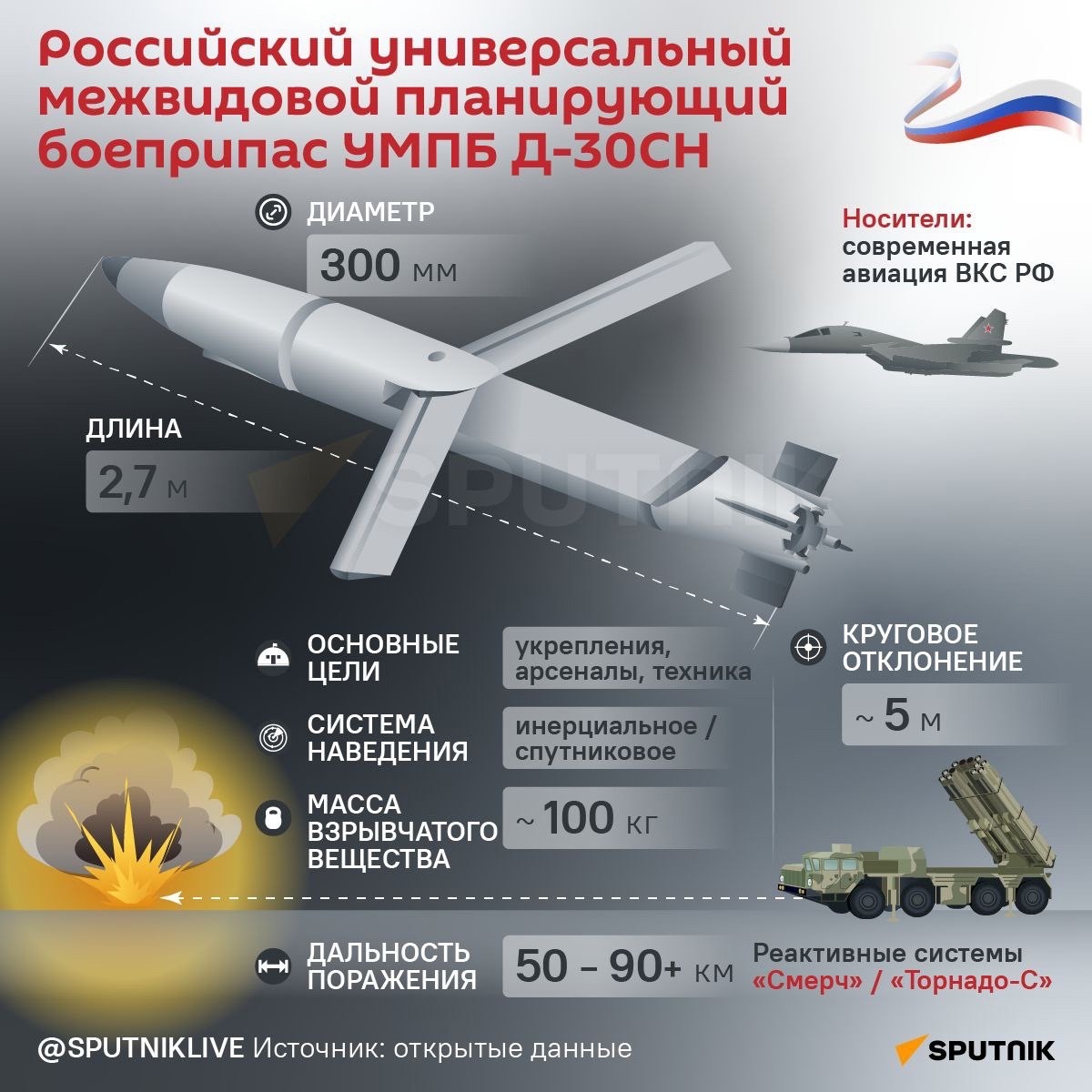Russian UMPB D-30SN bomb, similar to the US GBU-39 SDB, makes its appearance in Ukraine
The new UMPB D-30SN light guided bomb was tested in combat recently when Russian Air Force (VVS) aircraft bombed targets in the Ukrainian city of Kharkov on March 26.
While there had already been reports in early March that Russia was using a new type of low-caliber guided bomb, the attack on Kharkov provided the first photographic evidence of the use of the UMPB D-30SN.
Per the Ukrainian TG channel Colonel of the General Staff, Russia has recently fielded a new precision-guided munition.
The weapon is described as a FAB-250 warhead fitted with a guidance section, folding wings, tail control surfaces and likely an outboard turbojet or turbofan. pic.twitter.com/05o9wneztY
— John Ridge ???????? ???????? (@John_A_Ridge) March 8, 2024
According to information reported in Russian media, the new 300 mm diameter Unified Multi-Purpose Glide Bomb (or by its Russian acronym, UMPB D-30SN) is a low-caliber, low-weight guided munition, reminiscent of the American GBU-39 SDM, which can be launched both from aircraft and from the ground by rocket launchers, again, reminiscent of the GLSDB system developed by Boeing and Saab and delivered to the Ukrainian Army.
Each munition consists of a unified module with folding wings, a guidance unit, a Kometa-M ruggedized satellite receiver and a rocket booster or turbojet in the tail that would give it a demonstrated combat range of 90km (reported by Ukrainian authorities). When the UMPB D-30SN is fired from the ground, such as a Tornado-S or Smerch multiple rocket launcher system, it is installed via an adapter onto the first-stage booster rocket motor.

According to Russian media, this bomb would be superior to the U.S. counterpart in terms of range and combat load. Thus, the American ammunition has less than 100 kg of explosives, and the Russian warhead is the same as that of the FAB-250 aerial bomb, whose explosive head weighs 113 kg. Although it would not be ahead of more modern munitions such as the GBU-53/B StormBreaker or Spice 250, which use jam-resistant navigation equipment, two-way datalink and have terminal guidance systems for high accuracy.
After decades of neglect in which very little work was done in the development and manufacture of precision guided weaponry for its combat aircrafts, always seeking to make the most of its large stock of «dumb bombs», Russia was forced to adapt quickly to the demands of a modern high-intensity war that it did not anticipate, and for which it was not well prepared (to be fair, in NATO they are also seeing how many of their predictions were invalidated in the face of battlefield realities). The D-30SN UMPB undoubtedly represents a leap in technology and capabilities for the Russian Armed Forces, which will be able to strike farther, more accurately and more safely, outside the coverage area of most Ukrainian anti-aircraft systems, except for long-range missiles such as the S-300, Patriot or SAMP/T.

/https://aviacionlinecdn.eleco.com.ar/media/2024/03/UMPB-D-30SN-bomb.webp)
Para comentar, debés estar registradoPor favor, iniciá sesión